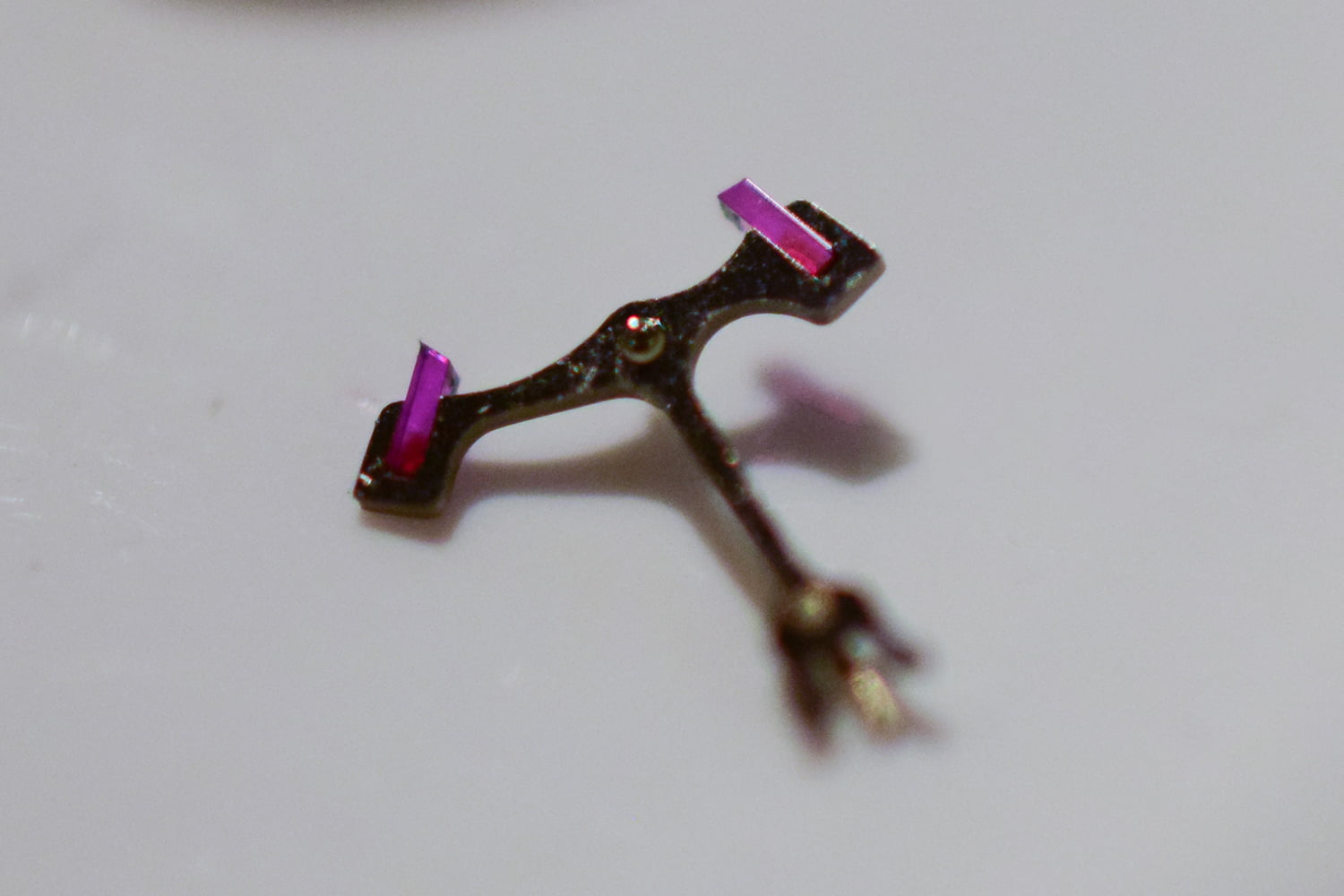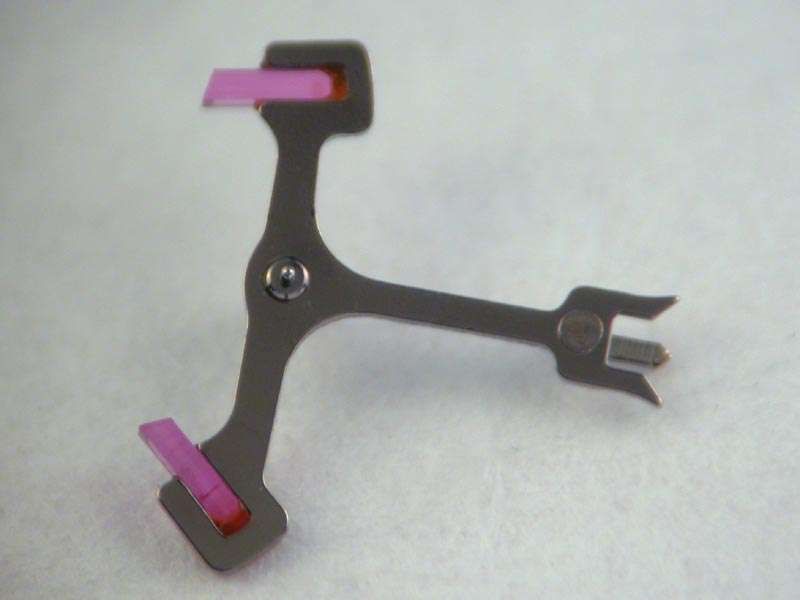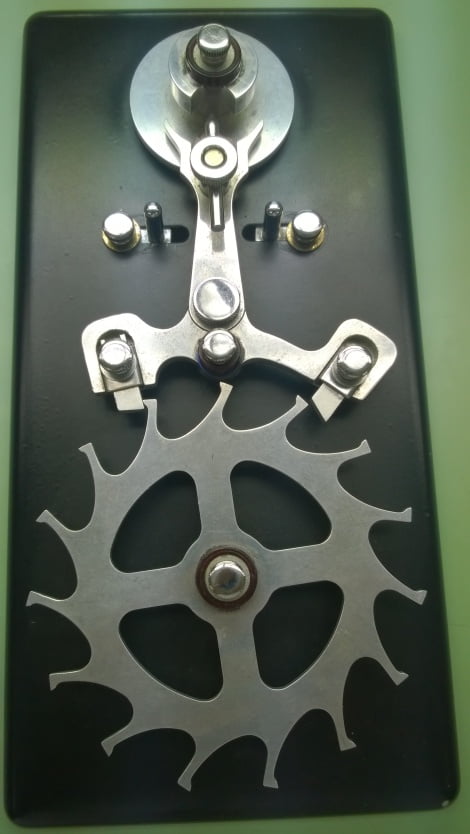
A pallet fork is a crucial component in a mechanical watch’s escapement mechanism. The escapement is responsible for regulating the release of energy from the watch’s mainspring and ensuring the precise and controlled movement of the watch’s hands.

The pallet fork, along with the escape wheel, forms the core of the escapement system. The pallet fork engages with the teeth of the escape wheel, which is driven by the watch’s mainspring. As the escape wheel rotates, it pushes against the pallet fork, causing it to oscillate back and forth.
The pallet fork’s primary function is to control the release of energy from the mainspring in small, precise increments. It does this by engaging with the escape wheel’s teeth and allowing the wheel to rotate by a fixed amount before locking it in place momentarily.

Custom FAE Mechanical Watch – Made in USA
For the pragmatic yet discerning watch owner, FAE offer the “Sapphire” edition of the Field Mechanical Watch which features all possible upgrades.
During each oscillation of the pallet fork, it interacts with the impulse jewel, receiving a brief impulse of energy that further drives its oscillation. This impulse, combined with the oscillation of the balance wheel and the action of the hairspring, creates the necessary timing mechanism that regulates the watch’s timekeeping accuracy.
The precise engagement and locking action of the pallet fork with the escape wheel ensure that the watch’s energy is released at a constant rate, controlling the rotation of the gear train and ultimately the movement of the watch’s hands.

In summary, the pallet fork in a mechanical watch’s escapement mechanism plays a critical role in regulating the release of energy and maintaining the timekeeping accuracy of the watch.

Phone Consulation: 15 Minutes
Whether you need help picking a FAE Watch movement type, or help designing your custom, hand-made watch, whether you have questions about your grandfather’s broken watch, or need help with ideas for an anniversary or graduation presents, we are just a phone call away. Even if you are considering a major watch purchase, and would like a different perspective on its relative value, don’t be afrai…